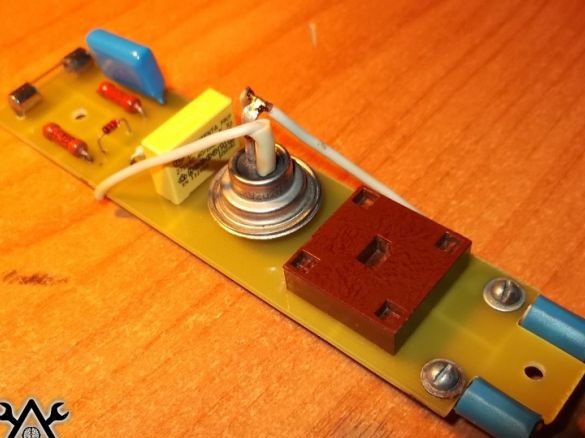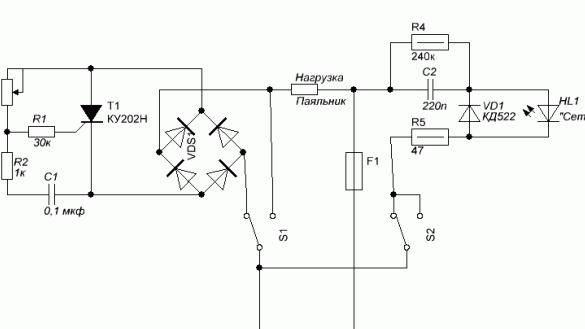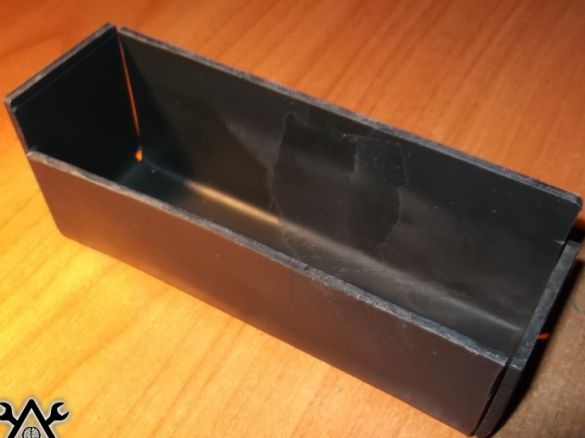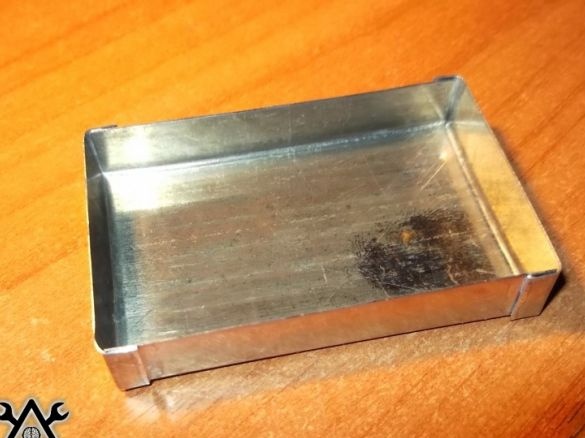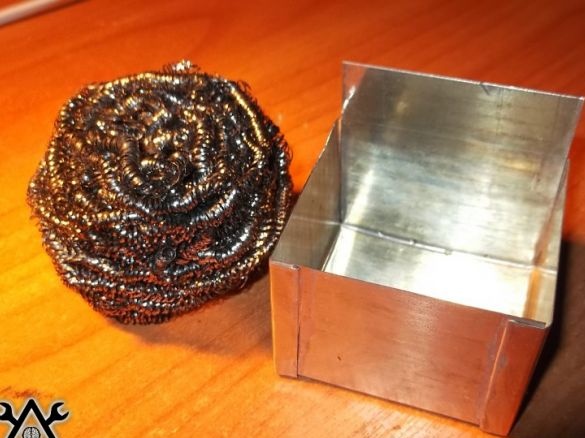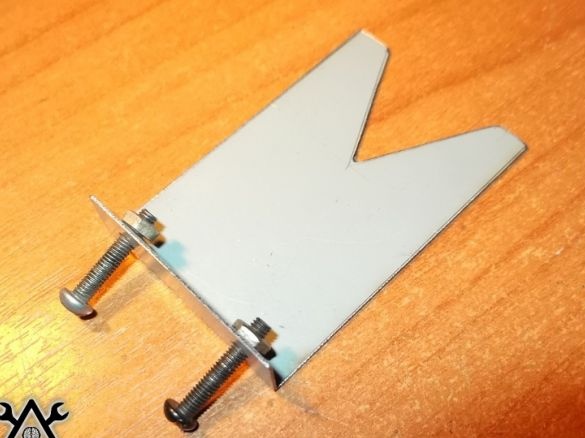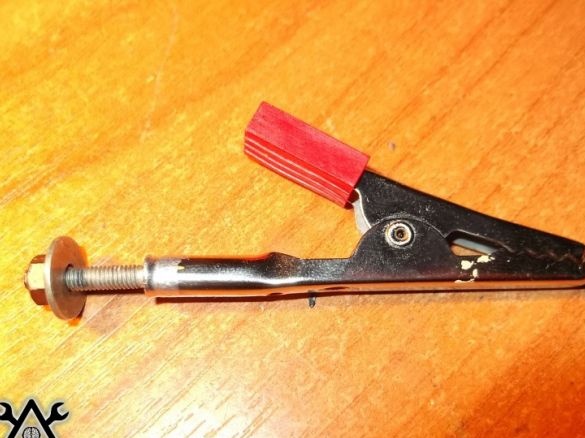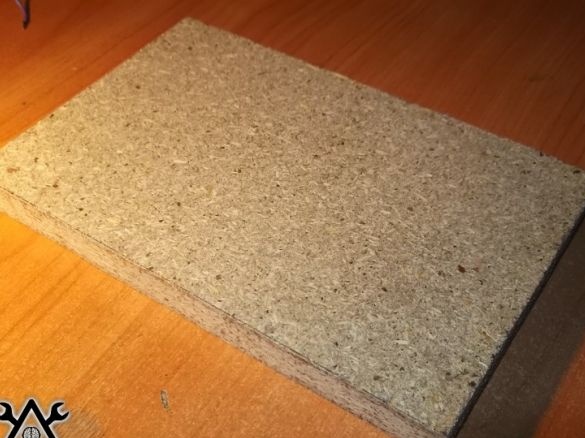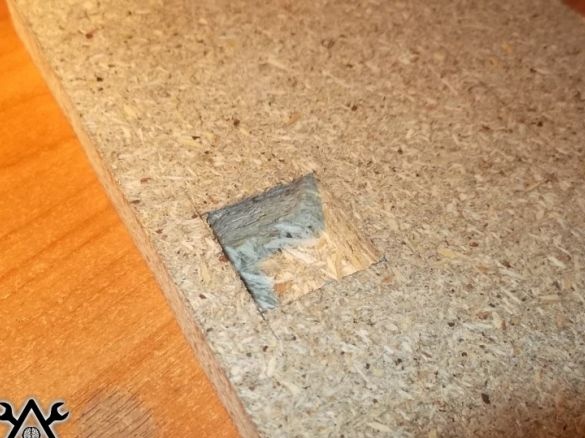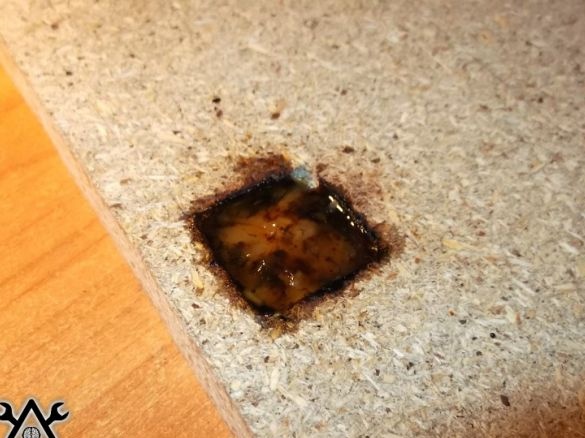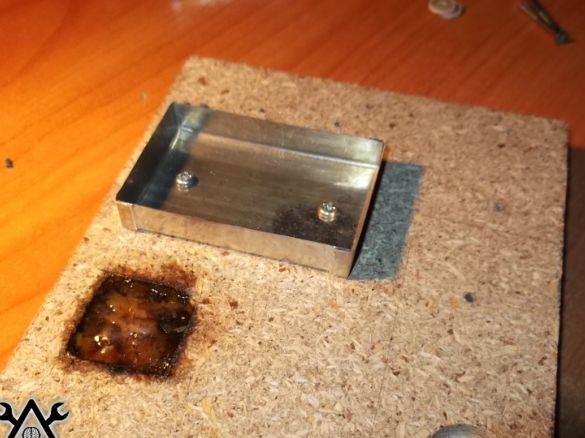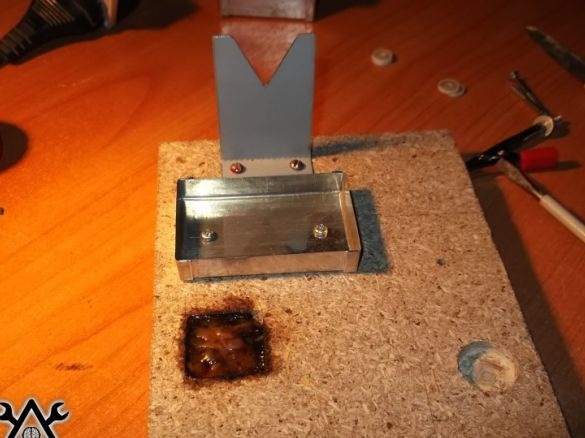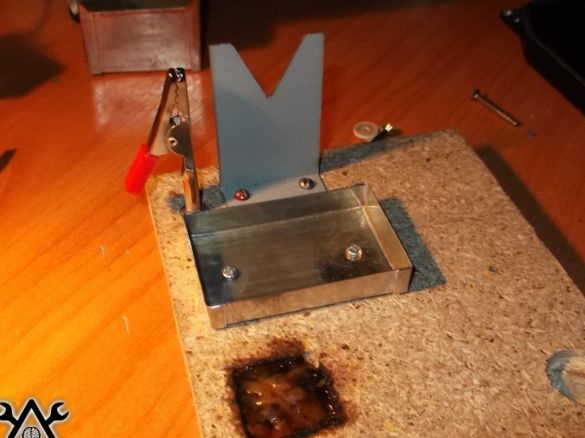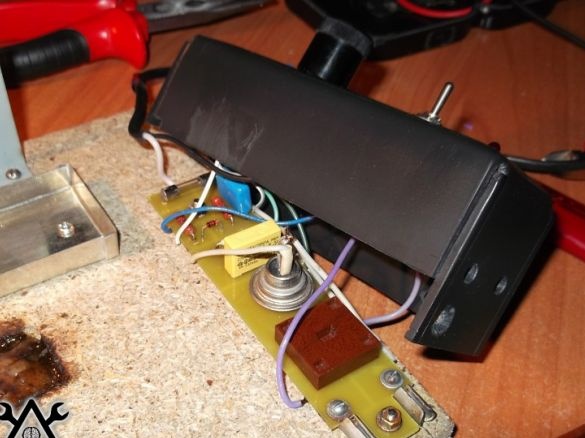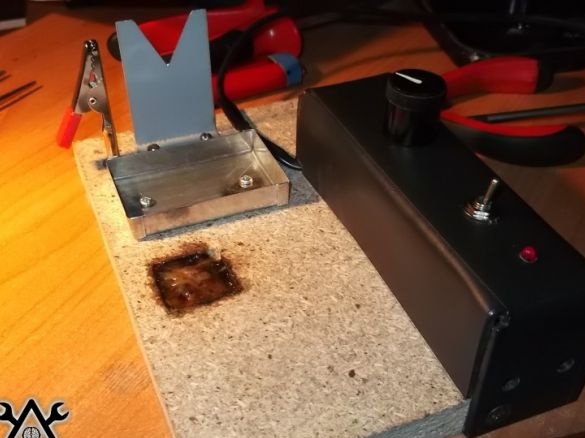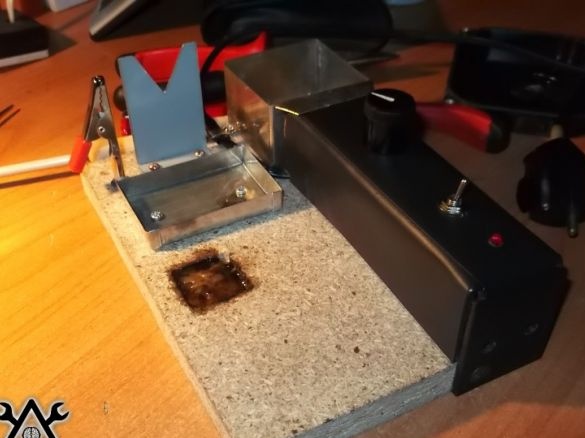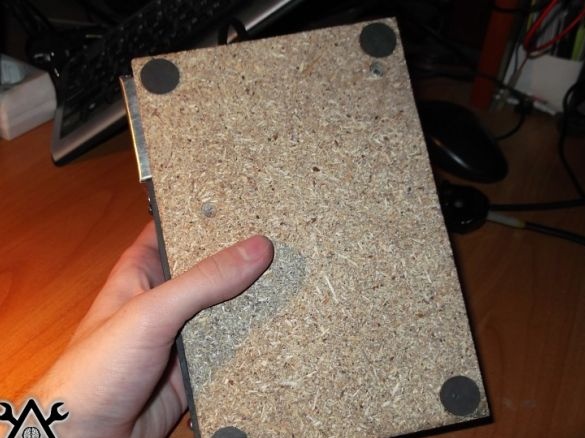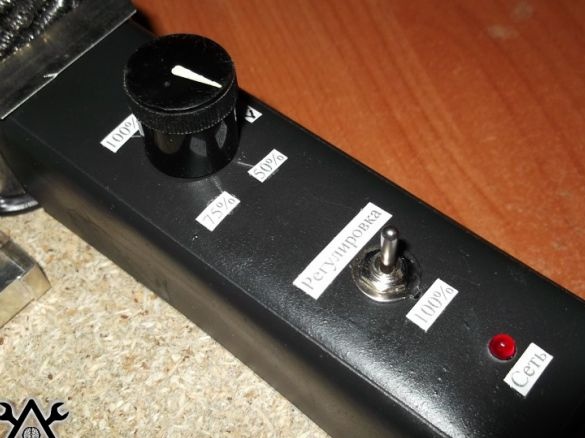On sites homemade A great many soldering iron stands. The author of the homemade product made this stand based on his previous experience. A distinctive feature of the stand is its built-in power regulator, which allows you to adjust the heating temperature of the soldering iron.
Tools and materials:
-Radio components;
- chipboard;
-Plastic;
-Tin;
-Fasteners;
-Clamp;
-Metal sponge;
-Rubber;
-Glue;
-Drill;
Cutter;
-Soldering iron;
-Hair dryer;
To begin with, the author assembled a power adjustment board according to the scheme.
I cut out a blank of the board case from plastic. He bent the plastic using a building hair dryer.
I cut out a box from tin and soldered corners in it.
Made another box for a metal brush. Using a brush, the author cleans the soldering iron tip.
Cut out an emphasis for a soldering iron.
I soldered a bolt to the clamp. He will play the role of a "third hand."
I cut the base out of chipboard.
With the help of a cutter, he made a notch.
He put rosin in the recess and melted it with a construction hairdryer.
Secured a metal box stand and clamp.
Screwed the board.
Replaced the board body.
Screwed the box for storing small things and an iron brush.
Cut out anti-slip feet from rubber. I glued them on the back of the stand.
I printed, cut and pasted the inscriptions on the power adjustment board.
Soldering iron stand ready.


